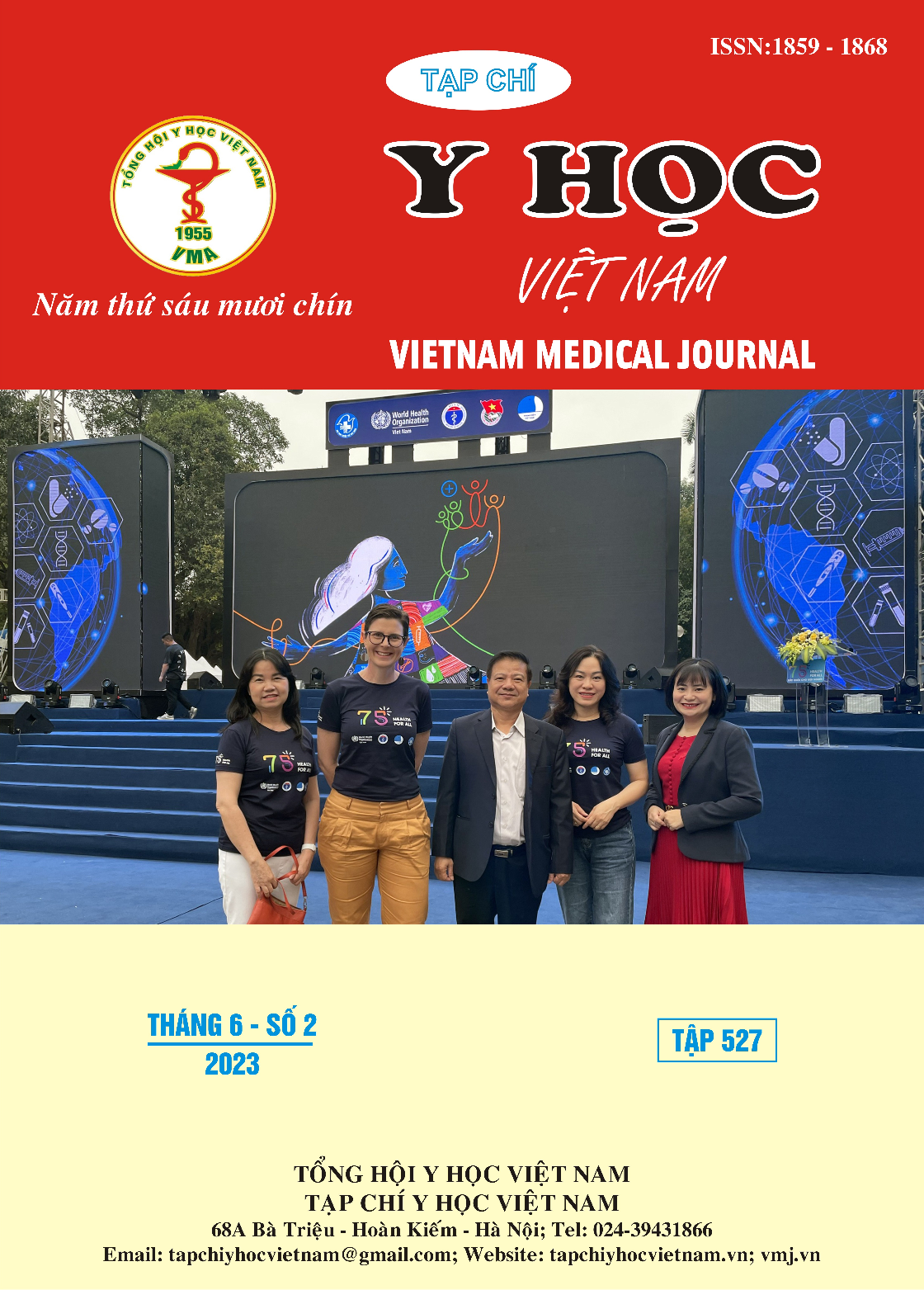A CASE REPORT LANCE - ADAMS SYNDROME FOLLOWING A RESUCITATED SUCCESSFULLY CIRCULATORY STOP
Main Article Content
Abstract
Chronic post-hypoxic myoclonus, also known as Lance-Adams syndrome, is a rare condition that presents with prolonged muscle jerks. It is typically observed in patients who have been successfully resuscitated following cardiac arrest, during the post-recovery period. In our patient, the diagnosis of Lance-Adams syndrome was made, and treatment with clonazepam and valproate was found to be effective and produced a rapid response. This case report aims to provide clinicians with additional experience in managing this rare disorder.
Article Details
Keywords
Lance-Adams syndrome
References
Lance JW, Adams RD. The syndrome of intention or action myoclonus as a sequel to hypoxic encephalopathy. Brain. 1963;86:111–136.
2. Gupta HV, Caviness JN. Post-hypoxic Myoclonus: Current Concepts, Neurophysiology, and Treatment. Tremor Other Hyperkinet Mov (N Y). 2016 Sep 17;6:409.
3. Bouwes A, van Poppelen D, Koelman JH, et al.: Acute posthypoxic myoclonus after cardiopulmonary resuscitation. BMC Neurol. 2012, 12:63.
4. De Léan J, Richardson JC, Hornykiewicz O. Beneficial effects of serotonin precursors in postanoxic action myoclonus. Neurology. 1976;26:863–868.
5. Giménez-Roldán S, Mateo D, Muradas V, De Yebenes JG. Clinical, biochemical, and pharmacological observation in a patient with postasphyxic myoclonus: association to serotonin hyperactivity. Clin Neuropharmacol. 1988;11:151–160.
6. Ferlazzo E, Gasparini S, Cianci V, Cherubini A, Aguglia U. Serial MRI findings in brain anoxia leading to Lance-Adams syndrome: a case report. Neurol Sci. 2013;34:2047–2050.
7. Freund B, Kaplan PW: Post-hypoxic myoclonus: Differentiating benign and malignant etiologies in diagnosis and prognosis. Clin Neurophysiol Pract. 2017, 2:98-102.
8. Freund B, Sutter R, Kaplan PW: Lance-Adams syndrome in the pretargeted temperature management era. Clin EEG Neurosci. 2017, 48:130-8
2. Gupta HV, Caviness JN. Post-hypoxic Myoclonus: Current Concepts, Neurophysiology, and Treatment. Tremor Other Hyperkinet Mov (N Y). 2016 Sep 17;6:409.
3. Bouwes A, van Poppelen D, Koelman JH, et al.: Acute posthypoxic myoclonus after cardiopulmonary resuscitation. BMC Neurol. 2012, 12:63.
4. De Léan J, Richardson JC, Hornykiewicz O. Beneficial effects of serotonin precursors in postanoxic action myoclonus. Neurology. 1976;26:863–868.
5. Giménez-Roldán S, Mateo D, Muradas V, De Yebenes JG. Clinical, biochemical, and pharmacological observation in a patient with postasphyxic myoclonus: association to serotonin hyperactivity. Clin Neuropharmacol. 1988;11:151–160.
6. Ferlazzo E, Gasparini S, Cianci V, Cherubini A, Aguglia U. Serial MRI findings in brain anoxia leading to Lance-Adams syndrome: a case report. Neurol Sci. 2013;34:2047–2050.
7. Freund B, Kaplan PW: Post-hypoxic myoclonus: Differentiating benign and malignant etiologies in diagnosis and prognosis. Clin Neurophysiol Pract. 2017, 2:98-102.
8. Freund B, Sutter R, Kaplan PW: Lance-Adams syndrome in the pretargeted temperature management era. Clin EEG Neurosci. 2017, 48:130-8


